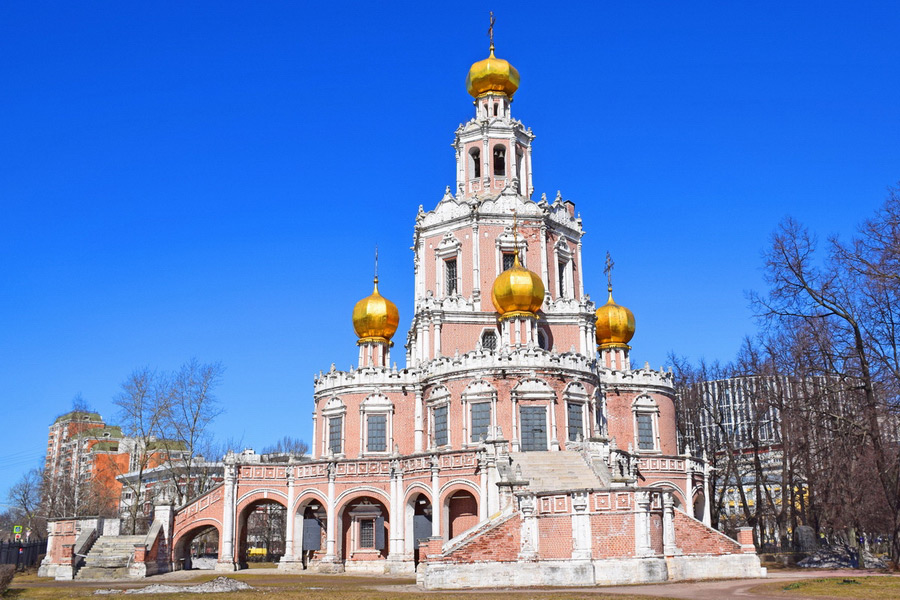
The Church of the Intercession of the Virgin is the jewel of Russian architecture. It is one of the most beautiful temples built in Moscow in the end of the 17th century, the brightest example of the so-called Moscow or Naryshinsky Baroque.
When Fyodor Mstislavskii owned Fili, there appeared the wooden Church of the Intercession. In 1693 the boyar Lev Kirillovich Naryshkin rebuilt the church into a magnificent temple. Part of the money for its construction was given by the Tsarina Natalia Kirillovna and the young Tsar Peter. According to the legend, Fili was repeatedly visited by the Tsar Peter the Great. In 1703, after the fall of Narva, Peter I brought the brightly colored stained glass windows for the church.
The Church of the Intercession in Fili is enchanting in its elegance, slimness and delicate white stone laces, which is particularly good-looking against the backdrop of the red walls. The building itself consists of several tiers, which are lavishly decorated with carved white stone. The carved stone inlay of rooster crowns, openwork crosses above the shiny gold faceted heads complement this beauty. Everything there is light, airy and intricate, like in a fairy tale. Even on an overcast day the church looks solemnly and joyfully. Skillfully made white-stone decor, the contrast of the white stone details and the walls along with the glowing scarlet gilding give the building an unusually festive look. The large sprawling staircases lead to the gallery surrounding the temple. The Church is two-storey. The lower level is the winter church in honor of the Intercession of the Virgin, in memory of the old wooden church of Fili; the main temple in the honor of the Savior Almighty occupies the upper level. The upper temple is decorated with gilded tiered iconostasis reaching up to the ceiling. The iconostasis is decorated with richly carved floral ornament made by the imperial icon-painters of the 18th century. The temple was closed only in July 1941. During the Great Patriotic War a few incendiary bombs hit the temple, already closed. In the Soviet times the church was looted. In the mid-1960s it was restored. In 1980 the building of the church was used as the branch of the Museum of Early Russian Art named after Andrei Rublev. The famous amazingly beautiful Church of the Intercession at Fili only recently returned to its church life.
The Church of the Intercession at Fili is an outstanding monument of Russian architecture, a single complex including architecture, decorative arts and paintings listed as a UNESCO World Heritage Site.

